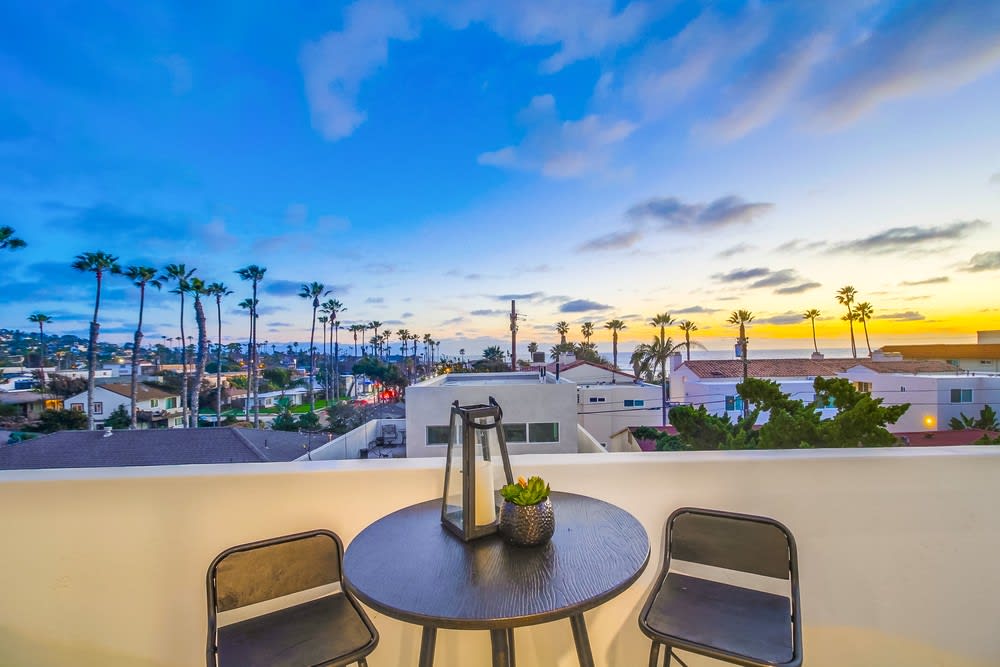In the previous 60 years, the shape of our homes and our nations changed rapidly. Technology ushered in new ways to develop properties, and every year we see the market take a new form. In the last year, the US went from a hot seller's market to a cooling period predicted to continue cooling. The outrageous bidding wars are dying down, and properties are sitting on the market longer. When we think about how much can change in just one year, it seems like things must be drastically different today than they were 60 years ago.
It’s true; there are several differences to being a buyer now compared to the 1960s. However, what may shock you is just how much stayed the same. Well, “stayed'' isn't accurate. The truth is the market moves in a cyclical pattern, and when you zoom out to 60 years, you can really see it. As today’s market slows and prices of homes stop soaring, remember the cyclical pattern discovered when looking far back over time.
The cost of homes
The price of homes is one of the most blatant changes in today’s home-buying experience compared to buying in the 1960s. The median house cost in the third quarter of 2022 was $413,500, according to the National Association of Realtors. The Historical Census of Home Values shows the median price of a home was $11,900 in the 1960s. Now a dollar today means a lot less than a dollar in the 1960s, so it’s crucial to account for those changes. When you exchange 1960s values with today’s, the average home would cost $99,970. So, about 20% of the current investment, and that’s the national median price.
If you look at the San Diego area, the average home sells for $905,000, and Pacific Beach real estate goes even higher. There’s a lot more opportunity today in investing in real estate properties. Not only do they start with higher values, but they also continue growing at a rate worthy of significant investments. Today’s real estate market offers a new world of opportunities for those looking to expand their portfolios. As prices rise, so does the demand for rental properties — the perfect pathway for an easy passive income. As your portfolio grows, the possibility of turning into a major developer will only invite more wealth into your life.
Mortgage payments
 Photo courtesy of Shutterstock
Photo courtesy of ShutterstockAs next year may show home buyers, a higher price for a home doesn’t always mean a higher price in mortgage payments. The downpayment, interest rate, type of mortgage, and length all determine how much you need to pay monthly. If you pay double the interest rate and prices don’t drastically fall, you’ll likely pay more for a less expensive house. Fortunately for home buyers in the 1960s, though, interest rates were at their first all-time low. A 30-year fixed mortgage with 6.5% interest would cost about $75 monthly. If we account for inflation, it’s closer to $630 today.
There’s no denying it’s an attractive price, especially when you compare it to the $1,810 the average single-family home mortgages for each month. You’ll notice that $630 is more than 20% of modern costs. While property values soared over the last 60 years, the costs associated with your mortgage payment were reduced.
Unfortunately, it’s not a straight line from 1960 to 2022. For instance, there was a period in the 1980s when that $100,000 home would cost $1,544 a month due to the nation's largest spike in interest payments. Fortunately, the prices went back down, and when you look at the history of interest rates, you’ll start to see why.
Interest rates
 Photo courtesy of Unsplash
Photo courtesy of UnsplashOne thing that hasn’t changed too drastically compared to the 1960s is the interest rate. Last year our nation hit a record for the lowest interest rates ever, and the same happened in the 1960s. Of course, those numbers are drastically different. In 2021 people bought houses at 2.68%, compared to around 6% for the 1960s drop.
In the last year, the number climbed to 7.9%, much closer to the rates of the 60s. Seeing such dramatic changes in a year can cause some stress for what’s to come. Fortunately, we can see the numbers always go back down. Interest rates rose slowly through the 70s, eventually bumping up to about where we are today, 8%. In the 80s, mortgages hit a historical high of 18.45%, making home buying not just cost-prohibitive but a much weaker investment.
Rates were cut in half in the 1990s, hitting a low of 7%. Economic setbacks in the early 2000s resulted in a brief interest hike, similar to what we see today. They quickly returned to the then national lows between the high 5% and the low 6%. As the real estate market started bouncing back from the major crash of 2009, rates hit a new all-time low. In 2012 they were just 3.35%, and while they did raise some, they never went over 4.87% for the rest of the aughts.
While the 20s just started, they’re already proving to be an interesting time for mortgage rates. Last year they hit their lowest ever of 2.68%, and today we’re almost at 8%. That’s more than a 300% increase. Fortunately, the timeline shows numbers will go back down, and when they do, we’ll likely return to the lower end of our average numbers.
Downpayment
 Photo courtesy of Unsplash
Photo courtesy of UnsplashPrices and rates may be up from 60 years ago, but down payments are down. Well, at least in terms of percentage. While you needed 20% down to buy a house for most of your mortgage history, things suddenly changed a little over a decade ago. New opportunities became available, and the upfront cost of buying went down.
You can now find mortgages with down payments as low as 1%. First-time home buyers typically do so with 3-5% today instead of the 20% 60 years ago. More money upfront gives you lower rates, providing new opportunities to pay less for your investment.
Mortgage types
 Photo courtesy of Shutterstock
Photo courtesy of ShutterstockWhile the 30-year fixed mortgage reigned supreme in real estate in the 1980s, adjustable-rate mortgages gained popularity. The most significant difference between these two types is in their names. A fixed mortgage remains at a fixed interest rate for the entire duration of the loan, typically 30 years. In contrast, adjustable-rate mortgages change interest rates over time. Predatory practices with adjustable-rate mortgages lead to the housing market struggles of 2008. The Pacific Beach real estate market felt the hit of these seemingly unpredictable mortgage structures.
Not all adjustable-rate mortgages prey on their borrowers, though. Some offer clear and concise terms with specifically laid out changes in interest rates. They tell you at what interval the changes will happen with a maximum number of changes and total interest rate. A quality broker goes over in painstaking detail the terms of this loan, highlighting, to the point of over-informing, the moments in which the rates will change. Such mortgages offer options for buyers needing PMIs, or who plan to free assets up in the future. The important thing is for buyers to prepare for the increased price.
One may even find a fixed-rate mortgage offered under market interest rates with the promise of rising costs. Knowing interest rates will continue to grow over the next year may inspire one to take advantage of the temporarily lower cost and to refinance when rates go back down. It’s all a matter of proper financial planning.
You still need an agent
 Photo courtesy of Shutterstock
Photo courtesy of ShutterstockNo matter how much changes, or the time that goes by, you still need an agent when you buy. They help protect you from legal liabilities, negotiate the price, and use their resources to find you the perfect house. Sure, you can purchase a property without an agent, but it’s a disservice to yourself. Not only is buying a home a significant investment, but it also involves a lot of legal technicalities. Learning the ins and outs of real estate law is a full-time commitment. An agent simplifies the process and allows you to skip all the nitty gritty parts so you can enjoy shopping for a new home.
Catrina Russell is the Pacific Beach realtor you need to lock in your dream property and the right investment price. Ensure your future returns while satisfying all of your current wants and needs. She’s received Agent of the Year and Customer Service Business of the year because of her in-depth knowledge of the area and the market and the ease she provides each of her clients through this major process. Contact Catrina today to get started!
*Header photo courtesy of Shutterstock




